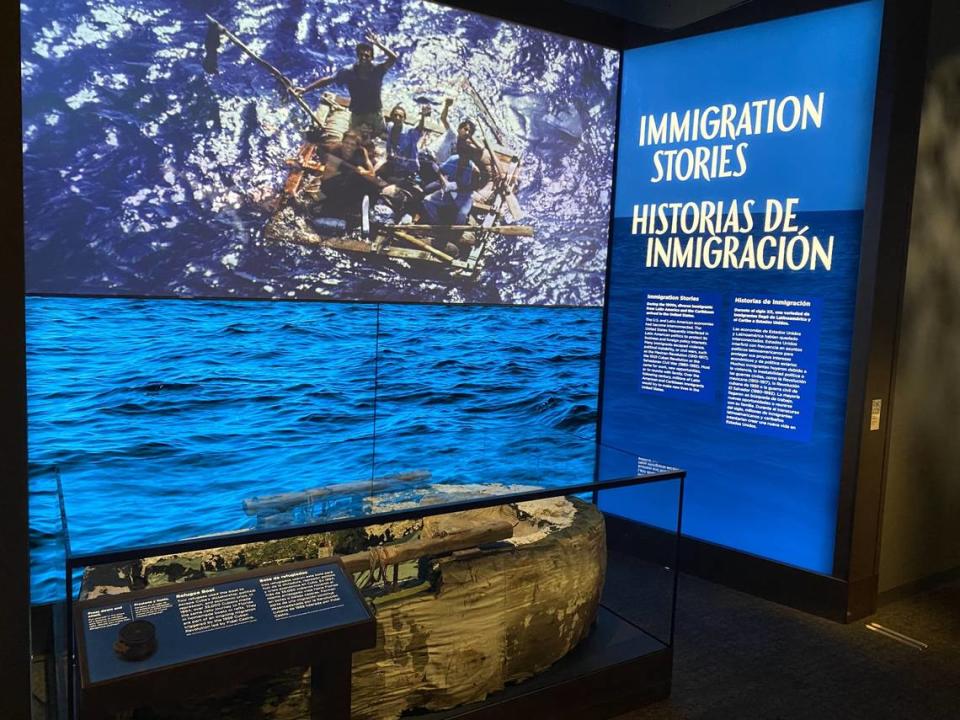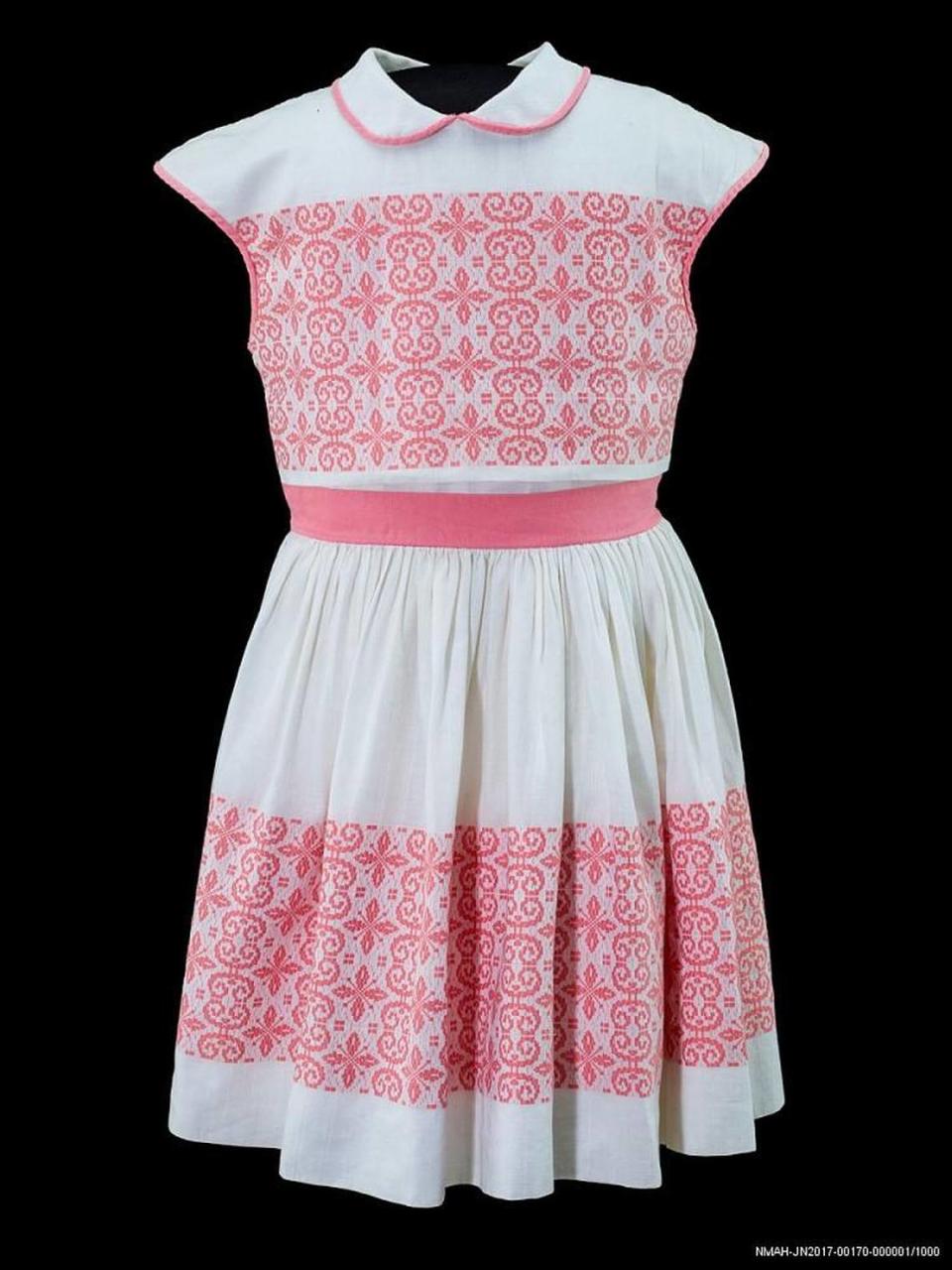Latino Museum in D.C. is essential. Let’s not ruin it with Florida-style politics | Opinion
- Oops!Something went wrong.Please try again later.
- Oops!Something went wrong.Please try again later.
If the Smithsonian National Museum of the American Latino ever gets off the ground — and many caring people are working hard to make it happen at or near the National Mall and Memorial Parks in Washington D.C. — it should stand as a testament to the long and rich history of the United States’ largest minority population.
But this dream, given the divisive national political climate, remains a fragile one.
A controversy over content and funding has shown just how difficult it will be to reconcile political differences about historical narratives in a mammoth project that’s supposed to be nonpartisan, yet, is seen by “Hispanic” Republicans as the work of leftist “Latino” Democrats.
Yes, even the most basic identity labels divide us — then, enter the politicians.
Angry with the framing of Cuban and Nicaraguan entries in the exhibit “¡Presente! A Latino History of the United States” — a show at the Molina Family Latino Gallery in the National Museum of American History, seen as a precursor for what a stand-alone museum might contain — congressman Mario Diaz-Balart, R-Miami Lakes, took action.
He and other Republicans voted in July to defund both the ¡Presente! exhibit and the Latino Museum in the Appropriations Committee.
‘Patronizing’ show
In a passionate speech, Diaz-Balart said the exhibit framed all Latinos as “victims” and was a “patronizing” and “quasi racist” portrayal. Broward congresswoman Debbie Wasserman Schultz, a Weston Democrat, also had a problem with it, finding the show to be “an admittedly offensive exhibit.”
But in no way did Wasserman suggest eliminating the project, as have Republicans waging an unrelenting campaign against, not only, perhaps, a mediocre exhibit, but also against the prospect of a Latino museum in the country’s capital.
The way The Heritage Foundation’s Mike Gonzalez frames his opposition in an op-ed immediately brings to mind Gov. Ron DeSantis’ culture wars in Florida.
“A bigger question is the war of ideas,” Gonzalez writes. “The museum’s initial exhibit is unrelentingly leftist and, frankly, insulting. It depicts Hispanics as America’s victims, as army deserters, drag queens and traitors, even suggesting that there is honor in deserting a U.S. military post.”
He claims that the exhibit “lies about the Hispanic experience in this country, presenting them as victims not victors, in an obvious attempt at seeding grievances.” And adds: “Funding such exhibits is how conservatives have unwittingly allowed the Marxist Left to capture the cultural institutions.”
I hear echoes of Florida Republicans bashing critical race theory, the whitewashing of Black history and the GOP ideological takeover of public educational institutions.
Another op-ed published in The Hill by three conservatives including Gonzalez after the exhibit first opened in 2022, calls it “an unabashedly Marxist portrayal of history, religion and economics... quite frankly, disgraceful.”
While I agree that the exhibition is poorly conceived and curated, their exaggerations sound like the same shoot-from-the-hip censorship that has become the go-to weapon for Republican Floridians, and is likewise being peddled by ultra conservatives to other states.
The attack feels like another Republican attempt at erasure of inconvenient U.S. history, like American support for the right-wing dictatorships of Fulgencio Batista in Cuba and Anastasio Somoza in Nicaragua.
But Diaz-Balart does have some valid criticism of factual inaccuracies — such as the motives of Cuban balseros taking to the seas.
He’s right that the rafter exodus of 1994 wasn’t only motivated by economic hardships, but also by political dissatisfaction with Fidel Castro’s failed communist regime. I know this first-hand because I interviewed rafters during two trips I made to the tent city where they were warehoused at the U.S. Naval Base at Guantanamo by the Clinton administration.

Virtual tour
I took a virtual tour of “¡Presente!” offered online — and at times, I also wanted to take an editing pen to labels and story narratives.
Simple fixes could’ve made a big difference in tone and enhanced accuracy.
In the “Immigrant Stories” section, a lovely pink and white dress from the early ‘60s was labeled: “Clothing worn by Cuban child immigrant who came to the United States through Operation Pedro Pan (Peter Pan).”
The label lacks detail that would have placed the dress in poignant context. What makes it museum-worthy is that 14,000 children were sent to this country alone from 1960 to 1962. Another discordant note: Early Cuban exiles, in particular, consider themselves political exiles, not immigrants.
I understand that we use the immigrant label as a catch-all term, but why use generic when you can be specific to an experience. Isn’t that the point of diversity?

I also found flaws in curation that starts off by pounding the point that “Latino identity is complex, diverse and personal,” then seems to lump items from countries and regions in display cases in a way that doesn’t make sense.
A “No Aid For Contra Terror” drawing, for example, didn’t add anything to the “Immigrant Stories” display, given the Nicaraguan experience in Miami, where teens being recruited against their will to join the Sandinista army fled after crossing the Rio Grande in the 1980s.
Its inclusion was a confusing pro-Sandinista, left-wing political statement that may speak to U.S. war funding policy, but not to Nicaraguan immigrants who were far from being terrorists.
No excuse to defund
But poor curation of one exhibit isn’t an excuse to defund an entire museum that will add a missing dimension to D.C.’s historical and cultural offerings.
Our role as Cuban Americans and Nicaraguan Americans is to educate people about our history, not to shut down the conversation using political power to disenfranchise everyone we disagree with.
The political division could hurt private fundraising efforts, set back the recognition of Latinos who have been making gains in every field — from Hollywood to space and every place in between — and predispose moderate Republicans to withdraw support.
“The important thing is that when a situation like that occurs, the best thing to do is insist on conversation and dialogue instead of taking negative actions that will damage the museum,” Cuban-American business leader and arts supporter Aida Levitan told me.
She was appointed in 2010 by President Barack Obama and Congress to the national commission on the creation of the Smithsonian Latino Museum.
“We have worked hard for many, many years to see this happen,” Levitan said. “Criticism is a legitimate thing, but not getting upset and taking extreme measures.”
Diaz-Balart, who faced backlash for his vote to defund, then backed down from that position after meeting with new Latino Museum leadership, said he made the drastic move because he was frustrated by being ignored.
“I find that very surprising,” Levitan said. “When a congressman calls, the Smithsonian responds.”
New Latino Smithsonian museum moving forward after Republicans threatened funding
Divide and conquer
Let’s hope this is, indeed, a new day for the Latino Museum.
At a time when politicians seek to divide and conquer, it behooves all of us — Republicans and Democrats — to find points of connection, and a first-rate cultural institution can be such a place. Surrounded by facts and nuance, it can offer a safe space to be.
But museums should remain the realm of curators and historians — never politicians or think tanks trying to dictate to them how to do their jobs.
When we stray from scholarship into politics, nobody wins.
Just ask Florida.

